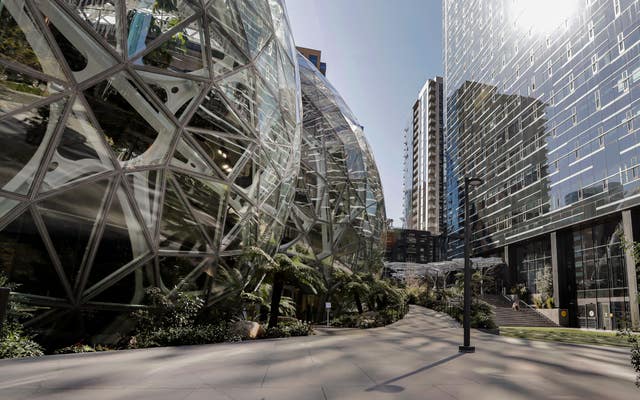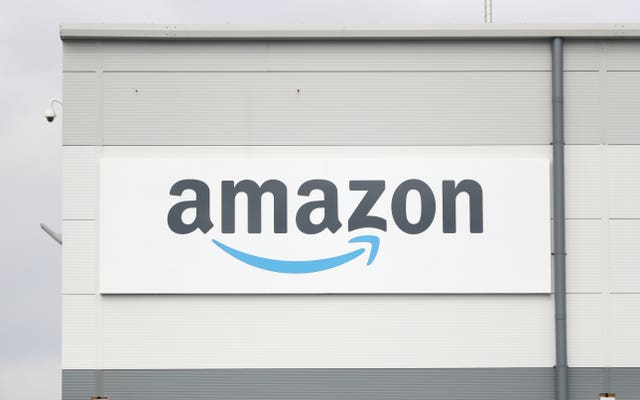Amazon workers upset about recent lay-offs, a return-to-office mandate and the company’s environmental impact are planning a walkout at the company’s Seattle headquarters.
The lunchtime protest comes a week after Amazon’s annual shareholder meeting and a month after a policy took effect requiring workers to return to the office three days per week.
“We respect our employees’ rights to express their opinions,” the company said in a statement.
As of Wednesday, more than 1,900 employees had pledged to walk out around the world, with about 870 in Seattle, according to Amazon Employees for Climate Justice, a climate change advocacy group founded by Amazon workers.
While some plan to gather at the Amazon Spheres – a four-storey structure in Seattle that from the outside looks like three connected glass orbs – others will participate remotely.
Brad Glasser, an Amazon spokesperson, said there has been a good energy on the company’s South Lake Union campus and at its other urban centres since more employees returned to the office.

More than 20,000 workers, however, signed a petition urging Amazon to reconsider the return-to-office mandate.
Mr Glasser said: “As it pertains to the specific topics this group of employees is raising, we’ve explained our thinking in different forums over the past few months and will continue to do so.”
In a February memo, Amazon CEO Andy Jassy said the company made its decision to return corporate employees to the office at least three days a week after observing what worked during the pandemic.
Among other things, he said senior leadership watched how staff performed and talked to leaders at other companies. He said they concluded employees tended to be more engaged in person and collaborate more easily.
In a note asking Amazon employees to pledge their participation in the walkout, organisers said Amazon “must return autonomy to its teams, who know their employees and customers best, to make the best decision on remote, in-person, or hybrid work, and to its employees to choose a team which enables them to work the way they work best”.
Some employees have also complained that Amazon has been slow to address its impact on climate change.

Amazon, which relies on fossil fuels to power the planes, trucks and vans that ship packages all over the world, has an enormous carbon footprint. Amazon workers have been vocal in criticising some of the company’s practices.
In an annual statement to investors, Amazon said it aims to deploy 100,000 electric delivery vehicles by 2030 and reach net-zero carbon by 2040. But walkout organisers contend the company must do more and commit to zero emissions by 2030.
The walkout follows widespread cost-cutting at Amazon, where layoffs have affected workers in advertising, human resources, gaming, stores, devices and Amazon Web Services, the company’s cloud computing division. The company has cut 27,000 jobs since November.
Like other tech companies, including Facebook parent Meta and Google parent Alphabet, Amazon ramped up hiring during the pandemic to meet the demand from homebound Americans who were increasingly shopping online to keep themselves safe from the virus.
Amazon’s workforce, in warehouses and offices, doubled to more than 1.6 million people in about two years. But demand slowed as the worst of the pandemic eased. The company began pausing or cancelling its warehouse expansion plans last year.
Amid growing anxiety over the potential for a recession, Amazon in the past few months has shut down a subsidiary that has been selling fabrics for nearly 30 years, closed Amazon Care, its hybrid virtual, in-home care service, and also ended Amazon Smile, a philanthropic programme.




Comments: Our rules
We want our comments to be a lively and valuable part of our community - a place where readers can debate and engage with the most important local issues. The ability to comment on our stories is a privilege, not a right, however, and that privilege may be withdrawn if it is abused or misused.
Please report any comments that break our rules.
Read the rules hereLast Updated:
Report this comment Cancel